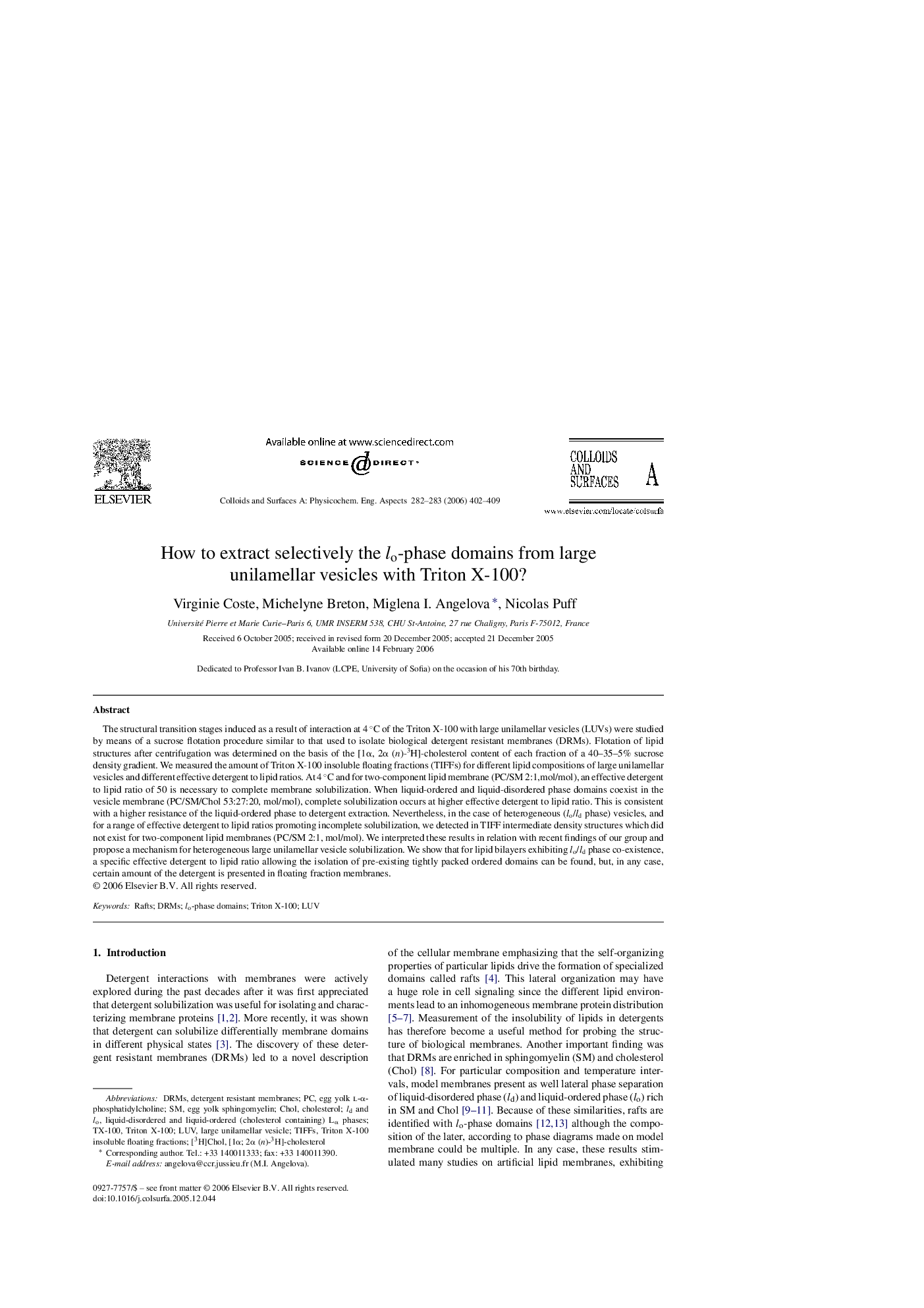| Article ID | Journal | Published Year | Pages | File Type |
|---|---|---|---|---|
| 598406 | Colloids and Surfaces A: Physicochemical and Engineering Aspects | 2006 | 8 Pages |
The structural transition stages induced as a result of interaction at 4 °C of the Triton X-100 with large unilamellar vesicles (LUVs) were studied by means of a sucrose flotation procedure similar to that used to isolate biological detergent resistant membranes (DRMs). Flotation of lipid structures after centrifugation was determined on the basis of the [1α, 2α (n)-3H]-cholesterol content of each fraction of a 40–35–5% sucrose density gradient. We measured the amount of Triton X-100 insoluble floating fractions (TIFFs) for different lipid compositions of large unilamellar vesicles and different effective detergent to lipid ratios. At 4 °C and for two-component lipid membrane (PC/SM 2:1,mol/mol), an effective detergent to lipid ratio of 50 is necessary to complete membrane solubilization. When liquid-ordered and liquid-disordered phase domains coexist in the vesicle membrane (PC/SM/Chol 53:27:20, mol/mol), complete solubilization occurs at higher effective detergent to lipid ratio. This is consistent with a higher resistance of the liquid-ordered phase to detergent extraction. Nevertheless, in the case of heterogeneous (lo/ld phase) vesicles, and for a range of effective detergent to lipid ratios promoting incomplete solubilization, we detected in TIFF intermediate density structures which did not exist for two-component lipid membranes (PC/SM 2:1, mol/mol). We interpreted these results in relation with recent findings of our group and propose a mechanism for heterogeneous large unilamellar vesicle solubilization. We show that for lipid bilayers exhibiting lo/ld phase co-existence, a specific effective detergent to lipid ratio allowing the isolation of pre-existing tightly packed ordered domains can be found, but, in any case, certain amount of the detergent is presented in floating fraction membranes.
